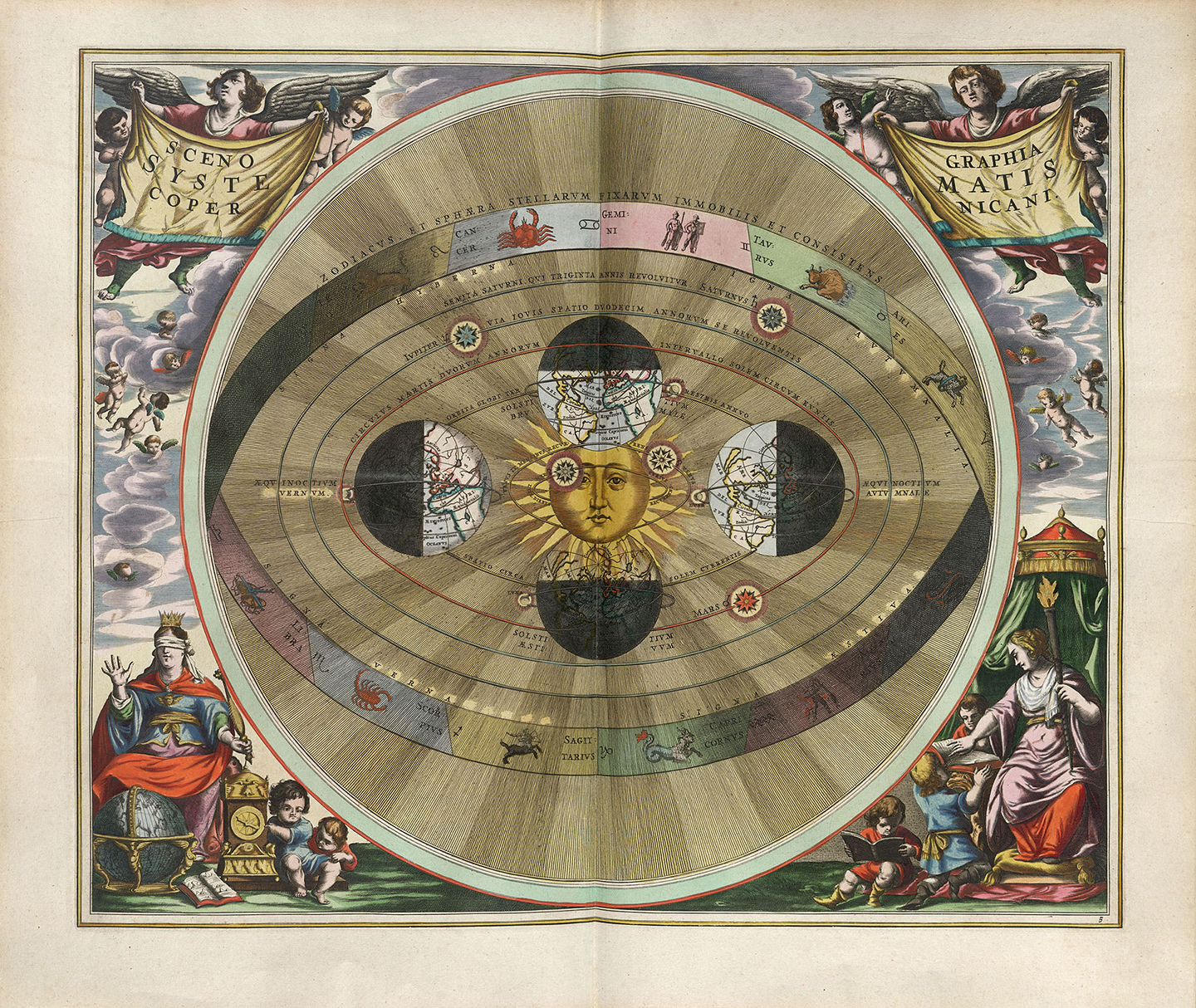The Life of Galileo, trans. Desmond Vesey (Methuen, 1960), scene 14. Borrowed from Alberto Toscano and Jeff Kinkle, Cartographies of the Absolute (Zero Books, 2015), where the quote was used as an epigraph.
“Base Faith,” e-flux journal, no. 86 (November 2017) →.
Invited as the first artist in residence at the Australian Institute for Machine Learning, Laurie Anderson commented: “One of my favorite quotes about technology is from my meditation teacher: ‘If you think technology will solve your problems, you don’t understand technology—and you don’t understand your problems.’ When people say the purpose of art is to make the world a better place I always think: better for who? Art is not medicine or science. It’s not about creative problem solving. If I had to use one word to describe art it would be freedom. I’m curious about whether this freedom can be translated or facilitated by AI in a meaningful way.” Quoted in Bruce Sterling, “Laurie Anderson, Machine Learning Artist-in-Residence,” Wired, March 12, 2020 →. The part of this quote that I use as an epigraph was originally quoted by Kate Crawford on X (formerly Twitter), April 1, 2021 →.
The year 1968 was a dramatic one across Cold War divides: the assassinations of Robert F. Kennedy and Martin Luther King Jr., the escalation of the Vietnam War, civil and student movements in the United States, and the crushing of the Prague Spring by Soviet tanks. The men on the moon were a perfect distraction and uplift. The astronauts recited verses one through ten of the Genesis creation narrative from the King James Bible. Dave Williams, “The Apollo 8 Christmas Eve Broadcast,” nasa.gov, September 25, 2007 →.
Kelly Oliver, Earth & World, Philosophy After the Apollo Missions (Columbia University Press, 2015), 17–19.
Or, as the entrepreneur Stewart Brand phrased it at the beginning of his Whole Earth Catalog (1968): “We are as gods and might as well get used to it.” This saying was meant to describe the purpose of the catalog.
Laurence H. Tribe, “Technology Assessment and the Fourth Discontinuity: The Limits of Instrumental Rationality,” Southern California Law Review 46, no. 3 (June 1973); as quoted by Paul N. Edwards, A Vast Machine: Computer Models, Climate Data, and the Politics of Global Warming (MIT Press, 2010), 1.
This is not to imply that computation and abstraction are anthropologically universal.
Paul J. Crutzen and Eugene F. Stoermer, “The ‘Anthropocene,’” in Global Change Newsletter, no. 41 (May 2000).
The supercomputers were located at the Max Planck Institute for Radio Astronomy and the MIT Haystack Observatory.
This corresponds to the way images of the whole earth are produced today (by military and commercial satellites—“theory machines,” as Toscano and Kinkle call them), achieving the effect of wholeness: “Images of the ‘whole earth’ are today ‘composites of massive quantities of remotely sensed data collected by satellite-borne sensors.’” Cartographies of the Absolute, 6.
Benjamin Bratton, a vocal proponent of speculative design, terraforming, and planetary computational governance, contemplated “the light emitted during the earth’s early Eocene period and only now arriving,” the “abyss in which we cannot see ourselves as we now understand ourselves to be,” and “the unconscious star-sucking void … blind and deaf to our orientations of horizon.” The Terraforming (Strelka Press, 2019), 21.
Quoted in a tweet by NBC Left Field, August 14, 2019 →.
Kristin Lam, “Why Are Jason Momoa and Other Native Hawaiians Protesting a Telescope on Mauna Kea? What’s at Stake?” USA Today, August 21, 2019 →.
The literature critically engaging with the TNT and the colonial techno-science on Mauna Kea by Native Hawaiian and Indigenous natural scientists and allies is growing. A good start is Sara Kahanamoku et al., “A Native Hawaiian-led Summary of the Current Impact of Constructing the Thirty Meter Telescope on Maunakea,” National Academy of Sciences Astro 2020, January 3, 2020 →.
“The ‘Anthropocene.’”
“The ‘Anthropocene,’” 17.
“The ‘Anthropocene,’” 18. Emphasis added.
“The ‘Anthropocene,’” 18. Emphasis added. This original text on the Anthropocene was followed by a slightly different version two years later, this time signed by only one of the authors and concluding with the more explicit prescription that “environmentally sustainable management during the era of the Anthropocene” may well involve “large-scale geo-engineering projects, for instance to ‘optimize’ climate.’” Crutzen, “Geology of Mankind,” Nature 415, no. 23 (January 3, 2002) →.
Crutzen, “Geology of Mankind.”
For a critical assessment of the Anthropocene hypothesis see, for example, T. J. Demos, Against the Anthropocene: Visual Culture and Environment Today (Sternberg Press, 2017), 28.
Robert Meister, After Evil: A Politics of Human Rights (Columbia University Press, 2011).
The Nomos of the Earth in the International Law of the Jus Publicum Europaeum, trans. G. L. Ulmen (1950; Telos Press Publishing, 2006).
As the Combahee River Collective puts it: “If Black women were free, it would mean that everyone else would have to be free since our freedom would necessitate the destruction of all the systems of oppression.” “The Combahee River Collective Statement” (1977), BlackPast.org →.
For a recent theorization of the genealogy of the general intellect, see Matteo Pasquinelli, “On the Origins of Marx’s General Intellect,” Radical Philosophy, no. 206 (Winter 2019).
Frantz Fanon, The Wretched of the Earth, trans. Richard Philcox (Grove Press, 1963).
Imperatives to Re-Imagine the Planet (Passagen-Verlag, 2013), 44.
Antonia Majaca and Luciana Parisi, “The Incomputable and Instrumental Possibility,” e-flux journal, no. 77 (November 2016) →.
See my essay “The Anthropocene Hypothesis and the Incomputable,” in Incomputable Earth: Digital Technologies and the Anthropocene, ed. Antonia Majaca (Bloomsbury, forthcoming 2024).
An expanded version of this text will appear in the forthcoming issue of Counter-Signals, edited by Alan Smart and Jack Henrie Fisher, with additional editing by Lola Pfeiffer.
